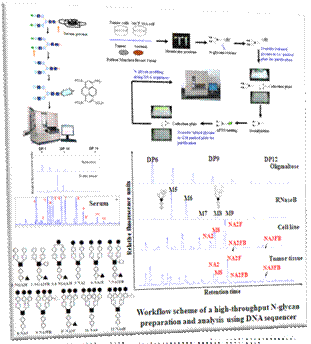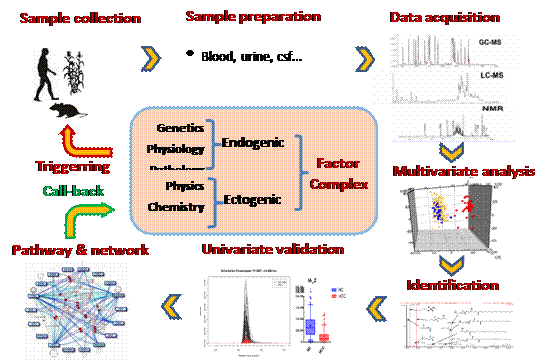The research of the Glycomic of cancer and related biomarker
Saccharide is the third bioinformative macromolecules after nucleic acid and protein. The change of the glycan structure of glycoprotein is closely related to the occurrence and development of cancer. It was started with the research on the glycan structure and function, and the modified high throughput N-glycan screening technique will be applied to separate the specific glycoprotein glycan structure of cancer. The specific N-glycan of membrane protein will be identified and analyzed in the primary tumor tissues and adjacent tissues. Our research is aimed to find the glycan which is specific to cancer patients and then to achieve the effective analysis and screening for the cell surface and secretion glycoproteins. And the mechanism of the altered glycan will be further studied. The research result has high academic value in clarifying the relation between the different phases of cancer and the law of structure change of specific glycan in plasma membrane of tumor tissue and in serum protein Nglycome of cancer patient. Meanwhile, Meanwhile, the screening technique can be used to get the effective diagnostic target of earlier period which will offer the target molecule for cancer diagnose and healing to build specific target tracking.

The research of the Metabonomics of cancer and related biomarker
Metabolomics or named metabonomics has been recently focused in the field of life science forencompassing the comprehensive and simultaneous systematic profiling of multiple metabolite levels and their systematic and temporal changes caused by various factors that is potentially capable to predict, diagnose especially demonstrate diseases like cancer. In our lab, to investigate the global metabolic alterations in human body during canceration, we performed the metabolomic studies based on the high-throughput UPLC Q/Tof-MS platform towards biological samples including serum, urine and extraction of tissues from subjects of different cancers. In combination with multiple pattern recognition methods such as principle component analysis (PCA), partial least square discriminant analysis (PLS-DA) and random forest classification (RF), the discriminative metabolites could be selected for clinical diagnosis. On this basis, we established the diagnostic models and analytical system for early diagnosis of related cancers. Meanwhile, with the employment of network and pathway analysis, we explored the latent relationship between the targeted metabolites of diverse categories, which could further reveal the systematic changes associated with canceration and be very helpful to the discovery of biomarker for early diagnosis and to the understanding of pathological mechanism of the occurrence of malignancy. To date, we have accomplished the metabolomic studies upon both breast cancer and hepatocellular carcinoma.
Typical workflow of metabolomic study
